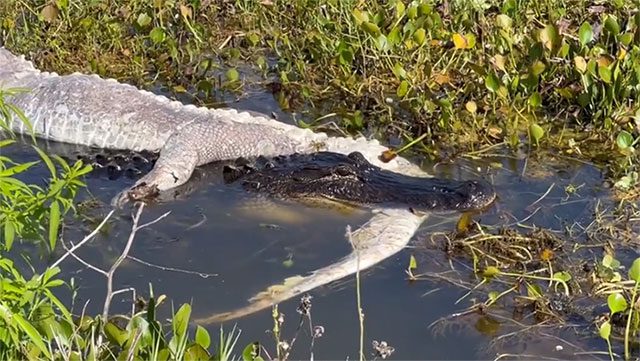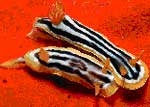As opportunistic predators, American alligators can nearly eat anything when hungry, including their own kind and carrion.
Dawn Jawman filmed an American alligator dragging a carcass of another alligator on Lake Apopka at the end of July. (Video: Dawn Jawman)
Dawn Jawman captured footage of an American alligator (Alligator mississippiensis) dragging the carcass of another alligator on Lake Apopka, Central Florida, as reported by Earth Touch News on August 25. Not long before this, a video of a similar incident—a live alligator pulling the tail of a deceased alligator (which had turned white)—was also shared on Facebook.
An American alligator with a carcass of another alligator that had turned white on Lake Apopka at the beginning of July. (Video: Meagan Tallman).
Given the “long deceased” appearance of the dragged alligators and their nearly equivalent size to the live one, these incidents involve scavenging rather than active hunting. American alligators, like many other crocodilian species, exhibit cannibalistic behavior, but there is usually a significant size difference between the individuals. Cannibalism is even a major cause of mortality among juvenile alligators.
“It is rare for large alligators to kill and eat others of similar size. Generally, a larger alligator will eat much smaller ones. The indication in these videos is the level of skin whitening on the dead alligators. If the skin of an alligator changes color like that, it means it has been dead for a while and has been sun-bleached,” said Dr. Adam Rosenblatt, an ecologist at the University of North Florida, who has extensively studied American alligators and black caimans (Melanosuchus niger).

Alligators are content with both dead and live meat, often preferring the former as it is essentially a free meal. “The bottom line is that alligators will always take advantage of an easy meal, and nothing is easier than the carcass of a large alligator,” Rosenblatt added.
It is likely that most wildlife living in the same area as American alligators becomes their food at one time or another, even when deceased. Experts have even recorded alligators dragging turtle carcasses from the beach into wetlands (freshwater) and climbing ashore to collect wild boar carcasses.
American alligators primarily inhabit rivers, lakes, and swamps in the Southern United States. Their prey typically includes fish, turtles, snakes, and small mammals. However, they are opportunistic predators and can eat nearly anything when hungry, including carrion, their own kind, and pets. With lengths ranging from 8.5 to 15 feet and weighing up to 1,000 pounds, American alligators are considered dangerous to humans.





















































